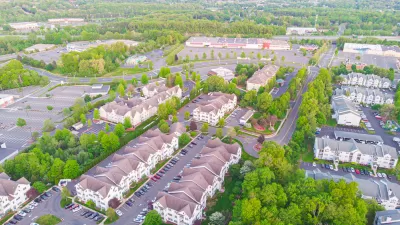Desegregate CT's Zoning Atlas is a first-in-the-nation map showing how all 2,620 zoning districts and two subdivision districts in Connecticut treat housing—a massive undertaking that required a team to read 32,378 pages of zoning regulations.

Connecticut’s Planning and Development Committee — a joint standing committee of the Connecticut General Assembly, which contains members of the senate and house — held a public hearing to discuss Senate Bill 1024, a sweeping statewide zoning bill aimed at lowering housing costs, increasing supply, and reducing sprawl.
The bill is thanks to one organization: Desegregate CT, a coalition of nonprofits and community members that formed in the wake of this summer’s protest movement to desegregate the state. The founder is Sara Bronin, a Hartford-based architect, attorney, professor and policymaker who saw, throughout her work, how zoning upheld segregated land use, with one-family lots making up wealthy, white neighborhoods and denser housing concentrated in lower-income urban areas. “We started public conversations about what zoning could do for our state,” she notes. “One of the questions we constantly got asked is, what is zoning like in our town?”
The result, which contributed to organizing around Senate Bill 1024 and will remain a crucial tool for Desegregate CT, is the team’s Zoning Atlas. It’s a first-in-the-nation interactive map showing how all 2,620 zoning districts and two subdivision districts in Connecticut treat housing — a massive undertaking that required a collaborative team to read, analyze and map 32,378 pages of regulations. “The Zoning Atlas is intended to be a resource for people to understand how their community is zoned and how it compares with other communities,” Bronin says, “and use that information to help promote change both within their communities and across the state.”
FULL STORY: Connecticut Is Considering Statewide Zoning Reform. This Map May Be Why

Trump Administration Could Effectively End Housing Voucher Program
Federal officials are eyeing major cuts to the Section 8 program that helps millions of low-income households pay rent.

Planetizen Federal Action Tracker
A weekly monitor of how Trump’s orders and actions are impacting planners and planning in America.

Canada vs. Kamala: Whose Liberal Housing Platform Comes Out on Top?
As Canada votes for a new Prime Minister, what can America learn from the leading liberal candidate of its neighbor to the north?

Washington State’s Parking Reform Law Could Unlock ‘Countless’ Acres for New Housing
A law that limits how much parking cities can require for residential amd commercial developments could lead to a construction boom.

Wildlife Rebounds After the Eaton Fire
Following the devastation of the Eaton Fire, the return of wildlife and the regrowth of native plants are offering powerful signs of resilience and renewal.

LA to Replace Inglewood Light Rail Project With Bus Shuttles
LA Metro says the change is in response to community engagement and that the new design will be ready before the 2028 Olympic Games.
Urban Design for Planners 1: Software Tools
This six-course series explores essential urban design concepts using open source software and equips planners with the tools they need to participate fully in the urban design process.
Planning for Universal Design
Learn the tools for implementing Universal Design in planning regulations.
Central Transportation Planning Staff/Boston Region MPO
Heyer Gruel & Associates PA
Institute for Housing and Urban Development Studies (IHS)
City of Grandview
Harvard GSD Executive Education
Regional Transportation Commission of Southern Nevada
Toledo-Lucas County Plan Commissions




























